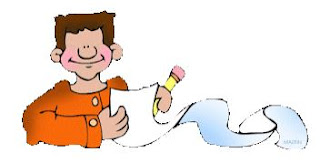This top post of 2016 was first published on April 21.
It's spring in the northern hemisphere, and a good time to check in with our goals (especially those we might have made a few months ago at the start of the year).
But what about our characters? To create a life-like character the reader will identify with, like, and root for, we must give that character motivation and goals.
What does your character care about? This element of caring sets the character up in how he/she is going to live life, how he’s going to react to certain things. Giving your character something to care about commits her to a stance to live by.
What next? We know what our character cares about, so now what? We have to challenge him, threaten her and what they care about. You throw them into a situation that challenges the part of them that cares and threatens the thing they feel is important.
A precious collection is stolen. A girl enters a dangerous relationship. Perhaps it’s a parent whose child has been injured/abducted/died. That parent’s goal could be healing, finding the child, revenge, forgiveness—all sorts of motivations that will carry him or her through this story journey.
You create risk. This doesn’t always have to be through a villain—it can be weather, hard times, a moral dilemma, friction between the characters. The twists and turns of your plot will come from these things.
How does the character react to this conflict and risk? Motivation is what causes the character to act. Is it to save his own life? Someone else’s he cares about? To preserve her reputation?
The reasons relate to the character’s inner character. Something drives him to rescue the kidnapped child, slay the dragon, challenge the alien invaders of track down the mass murderer.
Motivation also often comes from a desire for change. Give a character so compulsive a desire to make a given change that he can’t let it be, and you have the basis for a story. And your character MUST change. It doesn’t need to be huge, it can be subtle. It can be a character’s struggle with addiction, mid-life crisis—trying to get out of a rut, a change in attitude toward something or someone.
Readers don't examine stories looking for the motivational aspects. However, they instinctively know when they aren't there. They'll know the story is flawed and will stop reading.
So, we not only need goals as writers, but we need to create goals for our characters. What are some of your characters’ goals or motivations?
It's spring in the northern hemisphere, and a good time to check in with our goals (especially those we might have made a few months ago at the start of the year).
But what about our characters? To create a life-like character the reader will identify with, like, and root for, we must give that character motivation and goals.
What does your character care about? This element of caring sets the character up in how he/she is going to live life, how he’s going to react to certain things. Giving your character something to care about commits her to a stance to live by.
What next? We know what our character cares about, so now what? We have to challenge him, threaten her and what they care about. You throw them into a situation that challenges the part of them that cares and threatens the thing they feel is important.
A precious collection is stolen. A girl enters a dangerous relationship. Perhaps it’s a parent whose child has been injured/abducted/died. That parent’s goal could be healing, finding the child, revenge, forgiveness—all sorts of motivations that will carry him or her through this story journey.
You create risk. This doesn’t always have to be through a villain—it can be weather, hard times, a moral dilemma, friction between the characters. The twists and turns of your plot will come from these things.
How does the character react to this conflict and risk? Motivation is what causes the character to act. Is it to save his own life? Someone else’s he cares about? To preserve her reputation?
The reasons relate to the character’s inner character. Something drives him to rescue the kidnapped child, slay the dragon, challenge the alien invaders of track down the mass murderer.
Motivation also often comes from a desire for change. Give a character so compulsive a desire to make a given change that he can’t let it be, and you have the basis for a story. And your character MUST change. It doesn’t need to be huge, it can be subtle. It can be a character’s struggle with addiction, mid-life crisis—trying to get out of a rut, a change in attitude toward something or someone.
Readers don't examine stories looking for the motivational aspects. However, they instinctively know when they aren't there. They'll know the story is flawed and will stop reading.
So, we not only need goals as writers, but we need to create goals for our characters. What are some of your characters’ goals or motivations?
 |
| A native Montanan, Heidi M. Thomas now lives in North-central Arizona where she blogs, teaches writing, and edits. Her first novel, Cowgirl Dreams, is based on her grandmother, and the sequel, Follow the Dream, won the national WILLA Award. The next book in the series is Dare to Dream, and a non-fiction book Cowgirl Up! A History of Rodeo Women, is also available. Heidi has a degree in journalism and a certificate in fiction writing. |




Good idea to make sure the main characters at least have goals Otherwise, they go through the book willy nilly, without purpose. One of the first bits of advice I remember hearing from my local RWA chapter was the need for GMC in every book - Goal, Motivation and Conflict!
ReplyDeleteThanks for the terrific reminder, Heidi.
ReplyDeleteCharacter goals and objectives keep the reader invested in what happens. Will they succeed? Will they fail? Will they have to try again?
ReplyDeleteHappily, the protagonists in mysteries automatically have a goal--figuring out whodunnit.
ReplyDeleteFirst comes the goal, and then comes keeping the character true to him- or herself in the attainment (or not) of that goal. Isn't writing fun? Good post, Heidi, and a great reminder.
ReplyDelete